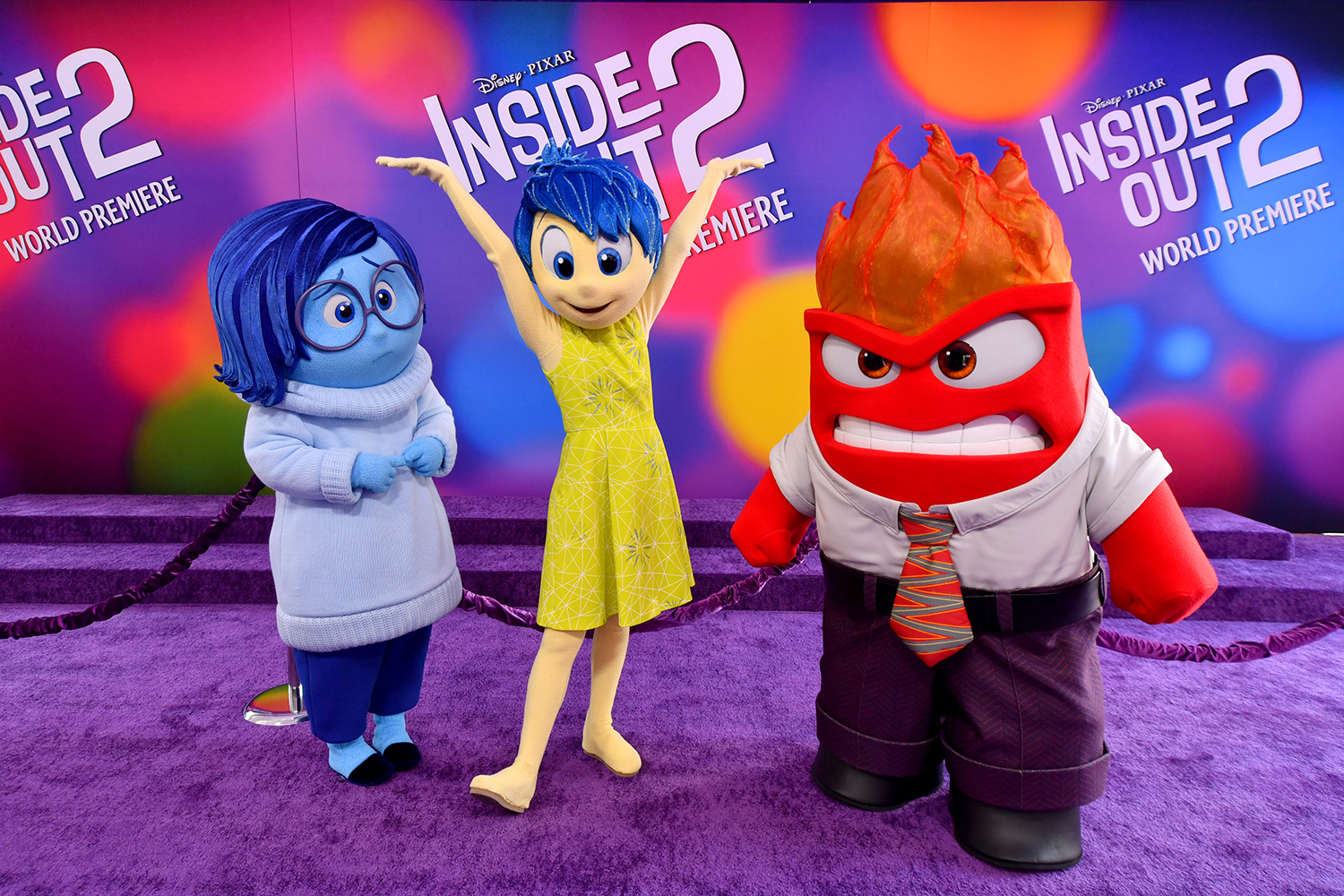 Spring days on the Storrs campus are bustling and often intense as students complete their coursework and finish projects in preparation for final exams. One of the most important and defining spring rites is the capstone engineering Senior Design Expo, which took place this year on Friday, May 1 across four buildings.
Spring days on the Storrs campus are bustling and often intense as students complete their coursework and finish projects in preparation for final exams. One of the most important and defining spring rites is the capstone engineering Senior Design Expo, which took place this year on Friday, May 1 across four buildings.
The demonstrations are the culmination of a process that begins each fall or spring term, when students embark on one- or two-semester design projects, often in close association with an industrial mentor or other sponsor and a faculty advisor, aimed at solving a genuine design problem. Sponsors from the private and public sector make these projects possible each year. This year’s demonstrations involved students in Mechanical Engineering, Biomedical Engineering, Electrical & Computer Engineering, Materials Science & Engineering, and Management & Engineering for Manufacturing (MEM). Separate design demonstrations were staged earlier the same week for students in Chemical Engineering, Civil Engineering, Environmental Engineering and Computer Science & Engineering.
The senior design experience in Mechanical Engineering is overseen by Dr. Thomas Barber, a professor-in-residence who recruits corporate sponsors and choreographs the program throughout the year. Sponsors commit $7,000 for each project, or $9,000 for a multidisciplinary project. Sponsoring companies also cover ancillary costs to build and test the designs and provide a technical representative to periodically meet with the team, monitor and mentor their progress, and infuse real-world input and guidance. Thirty-nine teams of Mechanical Engineering seniors presented their projects in the spacious Student Union ballroom before judging teams that selected a total of five teams for top laurels and monetary awards of $1,500, $1,000 and $500.
Taking home first prize was the team of William Maurer and Bryan Marazzi for their “Next Generation Current Interrupter,” sponsored by General Electric. Daniel Gindraux and Graham Philbrick captured second prize for their “Validation of FLUENT for Predicting Flow & Heat Transfer Characteristics of Pedestal Arrays.” The project was sponsored by Pratt & Whitney — TMC. Two teams garnered third place: Brian Anderson and Christopher Howard won for their Electric Boat-sponsored project, an “Experimental Method for High Rate Water Impact Loading of Composite Laminates,” and Mark Scarzella and Stephen Stagon also placed third for their “Product Packaging and Handling Standard Work,” sponsored by Pratt & Whitney — CANMC. In addition, a new award was introduced this year, the Professor’s Award, carrying a $1,000 purse. It was presented to Kathryn Gosselin for her National Science Foundation-sponsored “Design and Construction of a Narrow Depth-of-Field Optical Imaging System.”
Twelve Biomedical Engineering teams demonstrated their prototypes developed with funding from the National Science Foundation, the School of Engineering and Covidien. Professor John Enderle, Director of the BME Program, oversees all BME senior design projects. A number were custom-designed and developed exclusively for a 10-year-old Ashford, CT boy afflicted with cerebral palsy: a multi-terrain go-kart, a multi-terrain wheelchair, a specialized harness that allows him to use a trampoline, and a computer mount for travel. Please see the associated story here. Projects developed for Covidien, a surgical device manufacturer, included a synthetic abdominal wall, a synthetic shoulder, a force detection glove for abdominal procedures, a testing device for surgical staples and sutures, and a testing device for continuously sutured wound closures. For other projects, students developed a device for flexure testing of soft tissues, an assisted leg holding device, an advanced combat helmet capable of reducing brain injuries resulting from explosive devices, and a device that stimulates dental bone growth.
 Eleven Electrical & Computer Engineering teams demonstrated their multidisciplinary projects. In most cases, Electrical Engineering (EE) majors were paired with peers in different EE concentrations or with students majoring in Engineering Physics or Computer Engineering. Drs. Quing Zhu, Shengli Zhou, Mohammad Tehranipoor, Martin Fox, John Chandy and Rajeev Bansal served as faculty advisors on the projects. Two projects developed under the guidance of Dr. Zhu, a leader in breast cancer detection and characterization, involved development of an interface to improve transmission of ultrasound waves and an inexpensive ultrasound receiving system. Other projects centered on the development of a method for spatially locating an underwater node using acoustic communication, a personal fault testing unit for integrated circuits, a digital temperature controller device, an efficient solar collecting device, a three-phase AC electric car drive train, a mobile guided troubleshooting system, an aircraft network-enabled weather probe, a marine sensor system, and a methodology for vendor selection for a main generator output breaker to be used in the nuclear power industry. The digital temperature controller sponsored by Phonon was selected as the first prize winner and Dr. Zhu’s ultrasonic pulse generation and transmittance team was selected as the second prize winner.
Eleven Electrical & Computer Engineering teams demonstrated their multidisciplinary projects. In most cases, Electrical Engineering (EE) majors were paired with peers in different EE concentrations or with students majoring in Engineering Physics or Computer Engineering. Drs. Quing Zhu, Shengli Zhou, Mohammad Tehranipoor, Martin Fox, John Chandy and Rajeev Bansal served as faculty advisors on the projects. Two projects developed under the guidance of Dr. Zhu, a leader in breast cancer detection and characterization, involved development of an interface to improve transmission of ultrasound waves and an inexpensive ultrasound receiving system. Other projects centered on the development of a method for spatially locating an underwater node using acoustic communication, a personal fault testing unit for integrated circuits, a digital temperature controller device, an efficient solar collecting device, a three-phase AC electric car drive train, a mobile guided troubleshooting system, an aircraft network-enabled weather probe, a marine sensor system, and a methodology for vendor selection for a main generator output breaker to be used in the nuclear power industry. The digital temperature controller sponsored by Phonon was selected as the first prize winner and Dr. Zhu’s ultrasonic pulse generation and transmittance team was selected as the second prize winner.
Students enrolled in the Management & Engineering for Manufacturing (MEM) program also presented their projects and engaged in a poster competition. The seven teams were co-advised by ME associate professor Zbigniew M. Bzymek and associate professor of Business, Manuel Nunez. The projects involved not only technical aspects but also business and economic facets. Attendees cast votes for the poster that best represented the goals of the senior design project. The poster, “Traffic Yard Logistics,” developed by Amanda Pujda and Samaneh Kalafchi (sponsored by Frito Lay) was voted first place; “Tandberg Field View Video Collaboration,” by David Gershaw and Derek Palmisano (sponsored by Sikorsky Aircraft) captured second place; and third place was awarded to “Low Cost UV & Visible Flood Lamp,” developed by Jeff Blais and John Von Kaenel (sponsored by Dymax). Most sponsoring companies donated $3,000 per project to the MEM Program in recognition of the quality of the students’ and academic consultants’ work. The donations defray expenses connected with the senior design course, such as travel reimbursements, presentations outside of the School, as well as software and small hardware necessary for the course.
Twelve student teams in Materials Science & Engineering presented papers and posters on subjects ranging from setting allowable contamination rates on adhesive surfaces to the development of process parameters for laser hole drilling in superalloy sheets and optimization/selection of stainless steel for elevator applications. The oral presentations were evaluated by a panel of three judges from industry and academia. The first-prize award, which carries a $600/student award, went to the team of Jason Brown and Robert Scalise for their General Dynamics Electric Boat sponsored “Duplex Stainless Steel Welding Electrode Procedures.” Stephanie Gagliardi and Melissa Jacques took second prize, receiving $400 each for their Hamilton Sundstrand-sponsored project involving the “Design and Implementation of a Wear Test for Dynamically Loaded Component.” Taking third place were James Bosse and Julie Mackey, whose Integra-Cast sponsored project focused on development of a “Design Rule for High Strength Investment Cast Heat Treated Aluminum Alloys.”
 The corporate sponsors of senior design projects included Alstom, ASML, Applied Physical Sciences, Bodycote International, Covidien, Dominion Millstone Nuclear, DRS Technologies, DYMAX, Frito Lay, General Dynamics/Electric Boat, General Electric, Gentex Optics/Essilor, GKN Structures, Habco Inc., Hamilton Sundstrand, Henkel Loctite, NCPS Research, OSIM, Otis Elevator, Pfizer, Phonon Corp., Pitney Bowes, Pratt & Whitney, Qualtech Systems, RBC Bearings, Rogers Corp., Siemon, Sikorsky Aircraft, Ulbrich Steel, Unilever, UTC Power, Westinghouse Electric, Wilkinson Sword, Windham Dental Group and Wiremold Legrand.
The corporate sponsors of senior design projects included Alstom, ASML, Applied Physical Sciences, Bodycote International, Covidien, Dominion Millstone Nuclear, DRS Technologies, DYMAX, Frito Lay, General Dynamics/Electric Boat, General Electric, Gentex Optics/Essilor, GKN Structures, Habco Inc., Hamilton Sundstrand, Henkel Loctite, NCPS Research, OSIM, Otis Elevator, Pfizer, Phonon Corp., Pitney Bowes, Pratt & Whitney, Qualtech Systems, RBC Bearings, Rogers Corp., Siemon, Sikorsky Aircraft, Ulbrich Steel, Unilever, UTC Power, Westinghouse Electric, Wilkinson Sword, Windham Dental Group and Wiremold Legrand.
Other sponsors included the Connecticut Center for Advanced Technology (CCAT), the Army Research Office, the National Science Foundation and the UConn Foundation.
For information about sponsoring a senior design project, please contact one of the following individuals:
Biomedical Engineering – John Enderle, jenderle@engr.uconn.edu; (860) 486-5521
Chemical Engineering – Brian Willis, bgwillis@engr.uconn.edu; (860) 486-9429
Civil & Environmental Engineering – Amvrossios Bagtzoglou, acb@engr.uconn.edu; (860) 486-4017
Computer Science & Engineering – Steve Demurjian, steve@engr.uconn.edu; (860) 486-8951
Electrical & Computer Engineering – John Chandy, chandy@engr.uconn.edu, (860) 486-5047
Entrepreneurship Senior Design – John C. Bennett, jcbjr@engr.uconn.edu; (860) 486-2153
Management & Engineering for Manufacturing – Zbigniew Bzymek, zbig@engr.uconn.edu; (860) 486-2275
Materials Science & Engineering – Hal Brody, brody@ims.uconn.edu; (860) 486-0853
Mechanical Engineering – Tom Barber, barbertj@engr.uconn.edu; (860) 486-5342


